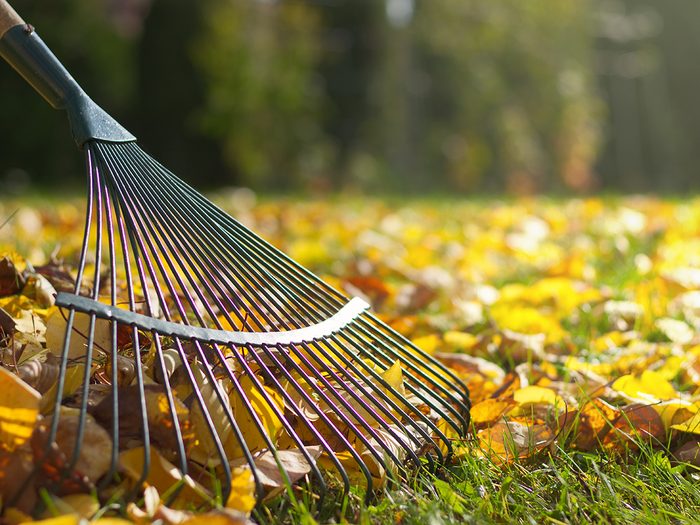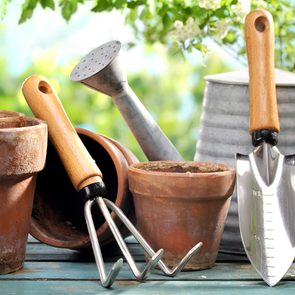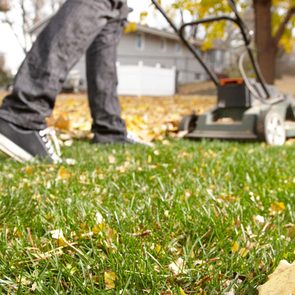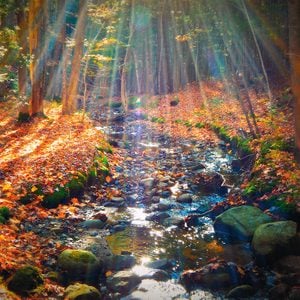Should You Rake Leaves or Just Leave Them?

Is raking up your leaves and taking them to the dump really the best course of action?
Every year as autumn rolls in and temperatures and leaves start to fall, homeowners are left with the same question: What do I do with all of the leaves that are now spread across my lawn?
Traditionally, it’s been common practice for people to rake the leaves into piles, bag them up, then take them to the local dump. But are raking leaves and taking them to a landfill actually the best thing for your yard and the environment?
What is the purpose of raking leaves?
Here’s the idea behind raking leaves: If left to sit the entire winter, they’ll turn into a mildewy mush that will smother your grass and keep it from growing back strong the next spring.
This much is true: Leaving a thick blanket of leaves on your lawn over the winter is bad for your grass. Raking your leaves and bagging them up is certainly an effective way to keep all of that from happening. Turns out, though, that it might not be the best thing you can do.
Can raking leaves be a bad idea?
The act of raking leaves is not the problem. It’s what you do with the leaves after they’ve been raked that can be problematic. If you usually take garbage bags full of leaves to your local dump, you might want to reconsider.
“The worst thing you can do is put (leaves) in bags and send them to landfills,” David Mizejewski, a naturalist at the National Wildlife Federation, told the Providence Journal in 2020.
Leaves in landfills take up a ton of unnecessary space. According to the Environmental Protection Agency (EPA), more than ten percent of the trash thrown away in the U.S. in 2018 was yard trimmings. To make matters worse, as the leaves in landfills break down, they combine with other organic materials to create methane, a greenhouse gas harmful to the environment.
So if you can’t take your leaves to the dump, what can you do with them? Well, burning them is also no good for a couple of reasons. First, it’s banned in many areas due to concerns over forest fires. Second, burning leaves send particulates in the air that the EPA says can lodge in people’s lungs and cause respiratory issues, heartbeat irregularities, even heart attacks.
What’s the best way to dispose of leaves?
Mulching and/or composting your leaves is the best course of action, for the health of your lawn and the environment. If you rake leaves into piles, collect them and use them as a base in your compost bin. Composting will turn the leaves into something you can actually use in your garden, instead of just letting them rot in the landfill. Many municipalities have composting programs. you can either take them to a compost site, or leave them at the curb and the city will do it for you. Check with your municipality for details.
You don’t have to rake, though, especially if you’re only dealing with a thin layer of leaves. Just run over the leaves with your lawnmower and collect the trimmings. Dry, chopped-up leaves make a great mulch.
You can even run your lawnmower over the leaves and let them sit in the yard all winter. As long as it’s not too thick of a layer (you don’t want to smother the grass, remember), the chopped-up leaves will serve as a natural fertilizer. That will help your lawn look healthy and vibrant when it grows back the following spring.
Next, check out 10 fall yard maintenance tips you’ll wish you knew sooner.






